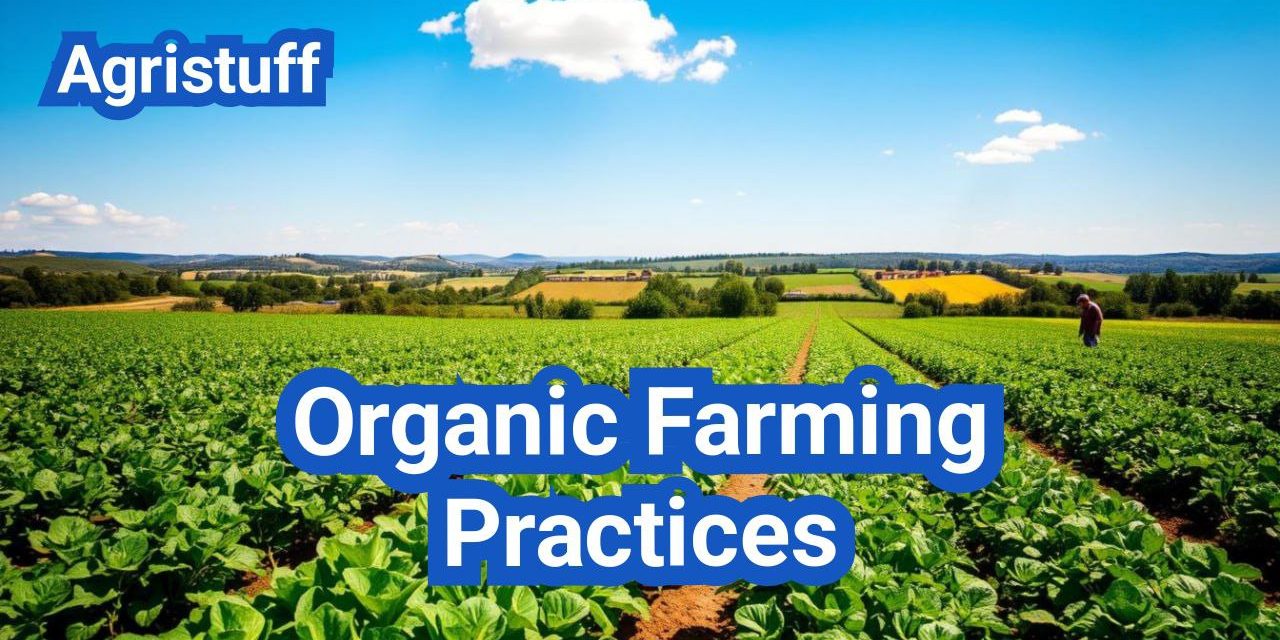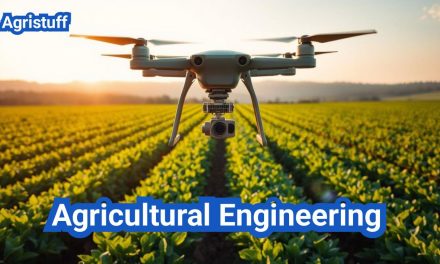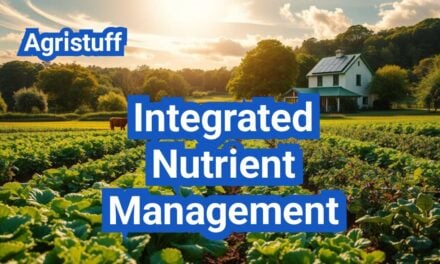Sustainable agriculture is gaining momentum as people become more aware of the importance of eco-friendly gardening and the benefits of organic farming.
Working in harmony with nature, organic farming practices focus on building and improving the soil, which is the foundation of our food system. This approach differs significantly from conventional farming methods, as it avoids the use of synthetic fertilizers and pesticides, promoting a healthier environment and producing nutritious food.
Key Takeaways
- Organic farming works in harmony with nature.
- It focuses on building and improving soil quality.
- This approach avoids synthetic fertilizers and pesticides.
- Promotes a healthier environment and produces nutritious food.
- Differs significantly from conventional farming methods.
The Fundamentals of Organic Agriculture
At its core, organic agriculture seeks to promote ecological balance and conserve biodiversity. This approach to farming is grounded in a set of principles that prioritize the use of natural processes and materials, avoiding synthetic substances that can harm the environment and human health.
Definition and Core Philosophy
The USDA organic regulations describe organic agriculture as the application of cultural, biological, and mechanical practices that support ecological balance and conserve biodiversity. This definition encapsulates the core philosophy of organic farming, which is to work with nature rather than against it.
Benefits for Environment and Health
Organic agriculture offers numerous environmental benefits, including improved soil health, efficient water use, and increased biodiversity. By avoiding synthetic pesticides and fertilizers, organic farming also contributes to healthier ecosystems and produces food that is free from harmful chemical residues.
The health benefits of organic agriculture are equally significant. By promoting the use of natural farming practices, organic agriculture helps to reduce the exposure of consumers to potentially hazardous chemicals used in conventional farming.
Comparison with Conventional Farming Methods
In contrast to conventional farming, which often relies on synthetic inputs to maximize yields, organic agriculture focuses on building soil fertility and promoting ecological services. While conventional farming may offer short-term gains in productivity, organic farming methods provide long-term sustainability and environmental stewardship.
A key difference between organic and conventional farming lies in their approaches to soil management. Organic farming emphasizes the use of compost, manure, and cover crops to enhance soil health, whereas conventional farming often relies on synthetic fertilizers.
Getting Started: Assessing Your Land and Resources

Before diving into organic farming, it’s essential to evaluate your land’s potential and available resources. This initial assessment will lay the groundwork for a successful and sustainable farming operation.
Evaluating Soil Quality and Composition
Soil is the foundation of any farm. Collecting soil for a Soil Test is a simple and important step in understanding your current soil health. This process involves analyzing the soil’s pH level, nutrient content, and structure. By doing so, you can identify any necessary amendments to improve soil fertility and overall health.
Understanding Your Climate Zone
Your local climate zone plays a significant role in determining the types of crops you can grow. Understanding the average temperature, rainfall patterns, and frost dates in your area is crucial for planning your farming activities. This knowledge will help you choose crops that are well-suited to your climate, thereby increasing the chances of a successful harvest.
Resource Assessment: Water, Space, and Time
Assessing your available resources is vital for the success of your organic farm. This includes evaluating your access to clean water, the amount of space available for farming, and the time you can dedicate to managing your farm. Efficient use of these resources will be key to maintaining a productive and sustainable farming operation.
As Aldo Leopold once said, “The land ethic simply enlarges the boundaries of the community to include soils, waters, plants, and animals, or collectively: the land.” This holistic approach to farming is at the heart of organic agriculture.
“The land ethic simply enlarges the boundaries of the community to include soils, waters, plants, and animals, or collectively: the land.”
Aldo Leopold
Essential Organic Farming Practices for Beginners
The foundation of a productive organic farm lies in adopting practices such as crop rotation and companion planting. These methods not only enhance soil fertility and structure but also contribute to a balanced ecosystem, reducing the need for external inputs.
Implementing these practices requires an understanding of their underlying principles and benefits. Let’s explore the fundamentals of each.
Crop Rotation Fundamentals
Crop rotation is a method used to increase biodiversity by using crops from different families over a period. This practice helps in maintaining soil health, reducing pests and diseases, and improving crop yields.
- Rotate crops to avoid depleting the soil of specific nutrients.
- Include legumes to fix nitrogen in the soil.
- Use cereals and grasses to improve soil structure.
Companion Planting Strategies
Companion planting involves growing different plants together to improve their growth, health, and productivity. Some plants repel pests, while others attract beneficial insects or improve soil conditions.
| Plant | Benefit | Companion Plant |
|---|---|---|
| Marigold | Repels nematodes | Tomatoes |
| Basil | Repels aphids and improves flavor | Peppers |
Cover Cropping Techniques
Cover cropping involves planting crops between crop cycles to protect and enhance the soil. Cover crops can help suppress weeds, reduce erosion, and add organic matter.
Cover crops are a crucial component of sustainable agriculture, offering numerous benefits that can enhance the overall health and productivity of the farm.
By incorporating these essential organic farming practices, beginners can set the stage for a thriving and sustainable farm. Each practice contributes to a holistic farming system that is more resilient and productive.
Building and Maintaining Healthy Soil

Soil health is crucial for successful organic farming, and there are several strategies to achieve it. Organic crop producers build soil quality by adding compost, animal manures, or green manures.
Composting Methods for Nutrient-Rich Soil
Composting is a vital process for creating nutrient-rich soil. It involves breaking down organic materials into a form that plants can easily absorb. Effective composting methods include aerobic composting and vermicomposting.
Natural Soil Amendments
In addition to composting, natural soil amendments can enhance soil fertility. These include using cover crops, green manure, and organic fertilizers.
No-Till and Minimal Tillage Approaches
Adopting no-till or minimal tillage approaches can help preserve soil structure and reduce erosion. These methods minimize disturbance to the soil, promoting healthier soil biota.
By implementing these strategies, organic farmers can improve soil health, increase crop yields, and contribute to a more sustainable agricultural system.
Natural Pest Management Strategies
To maintain a balanced ecosystem, organic farmers must employ effective natural pest management techniques. Pest management on organic farms relies on the ‘PAMS’ strategy: prevention, avoidance, monitoring, and suppression. This holistic approach ensures that pests are managed in a way that minimizes harm to the environment and human health.
Identifying Common Garden Pests
Understanding the types of pests that can damage crops is the first step in effective pest management. Common garden pests include aphids, caterpillars, and slugs. Regular monitoring of the farm or garden is crucial to identify pest infestations early.
Beneficial Insects and How to Attract Them
Not all insects are pests; many are beneficial and can help control pest populations. Ladybugs, lacewings, and parasitic wasps are examples of beneficial insects. Planting a diverse range of flowers and herbs can attract these beneficial insects to your farm or garden.
Organic Pest Control Solutions
When prevention and avoidance are not enough, organic pest control solutions become necessary. These can range from homemade sprays to physical barriers and traps.
Homemade Organic Sprays
Homemade sprays can be made from ingredients like garlic, hot peppers, and soap. These sprays can deter or kill pests without harming beneficial insects.
Physical Barriers and Traps
Physical barriers, such as fine mesh or fine netting, can prevent pests from reaching crops. Traps, including sticky traps and pitfall traps, can capture and remove pests from the farm or garden.
| Pest Control Method | Description | Effectiveness |
|---|---|---|
| Homemade Organic Sprays | Made from natural ingredients like garlic and hot peppers | High |
| Physical Barriers | Fine mesh or netting to prevent pest access | Very High |
| Traps | Sticky traps or pitfall traps to capture pests | High |
Organic Weed Control Methods

Organic weed control methods are essential for maintaining a healthy and productive farm ecosystem. Weeds compete with crops for water, nutrients, and light, potentially reducing yields and affecting crop quality.
Preventative Measures
Preventing weeds from germinating is a crucial step in organic weed control. This can be achieved through techniques such as using weed-free seeds, proper crop rotation, and maintaining healthy soil with adequate organic matter.
- Use certified weed-free seeds to prevent introducing new weed species.
- Implement crop rotation to break weed life cycles.
- Maintain soil health through the addition of organic amendments.
Manual and Mechanical Weed Management
Manual and mechanical methods are effective for controlling weeds, especially in smaller areas or for specific weed species. Techniques include hand-weeding, hoeing, and using mechanical cultivators.
| Method | Description | Effectiveness |
|---|---|---|
| Hand-weeding | Removing weeds by hand, often used for small areas or sensitive crops. | High |
| Hoeing | Using a hoe to cut weeds at the soil surface. | Medium to High |
| Mechanical Cultivation | Using machinery to cultivate and remove weeds. | High |
Mulching Techniques for Weed Suppression
Mulching is a highly effective method for suppressing weeds by blocking light and preventing seed germination. Organic mulches such as straw, wood chips, and leaves can be used.
By combining preventative measures, manual and mechanical weed management, and mulching techniques, organic farmers can effectively control weeds and maintain a healthy, productive farm ecosystem.
Water Conservation in Organic Farming

Water conservation plays a vital role in sustainable organic farming, ensuring the long-term viability of agricultural practices. Organic producers use natural processes and materials when developing farming systems, and efficient water management is crucial for maintaining ecological balance.
Efficient water use not only reduces the environmental impact of farming but also helps in maintaining healthy crops and soil. There are several strategies that organic farmers can employ to conserve water.
Efficient Irrigation Systems
One of the key methods for conserving water in organic farming is through the use of efficient irrigation systems. These systems deliver water directly to the roots of plants, minimizing evaporation and runoff. Drip irrigation and soaker hoses are examples of efficient irrigation methods that reduce water waste.
Rainwater Harvesting Methods
Rainwater harvesting is another effective technique for conserving water. By collecting and storing rainwater, farmers can reduce their reliance on groundwater and surface water sources. This approach not only conserves water but also decreases the energy required for pumping water.
Drought-Resistant Farming Techniques
Implementing drought-resistant farming techniques can also help in water conservation. This includes using drought-tolerant crop varieties, mulching to retain soil moisture, and practicing conservation tillage to reduce soil disturbance and erosion.
| Water Conservation Method | Description | Benefits |
|---|---|---|
| Efficient Irrigation Systems | Deliver water directly to plant roots | Reduces evaporation and runoff |
| Rainwater Harvesting | Collect and store rainwater for use | Decreases reliance on other water sources |
| Drought-Resistant Techniques | Use drought-tolerant crops and mulching | Enhances soil moisture retention |
By adopting these water conservation strategies, organic farmers can improve the sustainability of their farming practices, reduce their environmental footprint, and contribute to a more resilient agricultural system.
Selecting and Saving Organic Seeds

To achieve a successful organic harvest, one must start with the right seeds. Organic crop producers use organic seeds and planting stocks to protect the integrity of their crops. Selecting and saving organic seeds is a critical practice that ensures the continuity and diversity of your farm or garden.
Understanding Seed Types
It’s essential to understand the different types of seeds available: heirloom, open-pollinated, and hybrid. Heirloom seeds are varieties that have been saved and handed down through generations, often possessing unique characteristics and flavors. Open-pollinated seeds are pollinated by natural means and can be saved for future use, whereas hybrid seeds are a cross between two different varieties and may not produce consistent results if saved.
Seed Saving Techniques
Seed saving is an art that requires careful planning and execution. Techniques include selecting healthy plants, isolating varieties to prevent cross-pollination, and properly drying and storing seeds. By adopting these methods, farmers can maintain control over their seed stock and reduce reliance on external suppliers.
Creating a Seed Bank
A seed bank is a collection of seeds stored for future use, providing a safeguard against crop failure and ensuring self-sufficiency. To create a seed bank, one must carefully catalog and store seeds in a cool, dry environment. This practice not only preserves genetic diversity but also empowers farmers to adapt to changing conditions.
| Seed Type | Description | Benefits |
|---|---|---|
| Heirloom | Passed down through generations | Unique flavors and characteristics |
| Open-Pollinated | Pollinated naturally | Can be saved for future use |
| Hybrid | Cross between two varieties | Often exhibits hybrid vigor |
Implementing Sustainable Organic Farming Practices

Sustainable organic farming practices are crucial for maintaining ecological balance and promoting biodiversity. These practices not only enhance the health of the farm ecosystem but also contribute to the overall sustainability of the agricultural system.
Creating Closed-Loop Systems
Closed-loop systems in organic farming involve recycling nutrients and waste to minimize external inputs. This can be achieved through composting, where organic waste is converted into nutrient-rich fertilizer for crops. By adopting closed-loop systems, farmers can reduce their reliance on synthetic fertilizers and improve soil health.
For example, a farm might use crop residues to feed livestock, whose manure is then composted and used as fertilizer for the next crop cycle. This approach not only reduces waste but also enhances the overall efficiency of the farm.
Biodiversity Enhancement Techniques
Enhancing biodiversity is a key aspect of sustainable organic farming. Techniques such as crop rotation, companion planting, and maintaining ecological corridors can significantly improve biodiversity on the farm. These practices help in creating a balanced ecosystem that is more resilient to pests and diseases.
A diverse farm ecosystem can also support a wider range of beneficial insects and pollinators, which are essential for the health of many crops. By promoting biodiversity, farmers can reduce their reliance on external inputs like pesticides and improve the overall health of their crops.
Energy Conservation Methods
Energy conservation is another critical aspect of sustainable organic farming. Farmers can adopt various methods to reduce energy consumption, such as using renewable energy sources, improving irrigation efficiency, and minimizing the use of machinery.
| Energy Conservation Method | Description | Benefits |
|---|---|---|
| Renewable Energy | Using solar or wind power for farm operations | Reduces reliance on fossil fuels, lowers energy costs |
| Efficient Irrigation | Implementing drip irrigation or other water-saving techniques | Conserves water, reduces energy used for pumping |
| Minimal Machinery Use | Reducing the use of tractors and other machinery | Lowers fuel consumption, reduces soil compaction |
By implementing these sustainable practices, organic farmers can not only improve the health of their farms but also contribute to a more sustainable food system.
Season Extension Techniques
By adopting season extension techniques, farmers can enjoy a more prolonged harvest season and improved crop quality. Season extension methods allow farmers to grow crops beyond the traditional growing season, maximizing yields and improving profitability.
Cold Frames and Row Covers
Cold frames and row covers are simple yet effective tools for season extension. Cold frames act as mini-greenhouses, trapping heat and protecting plants from harsh weather conditions. Row covers, on the other hand, are lightweight fabrics that allow sunlight and water to reach plants while keeping pests and frost at bay.
Greenhouse Basics for Organic Growers
Greenhouses offer a more extensive season extension solution, providing a controlled environment for crops. Organic growers can benefit from greenhouses by using natural methods to regulate temperature and humidity. This includes using shading materials, ventilation systems, and organic pest control methods.
Succession Planting for Continuous Harvests
Succession planting involves planting small batches of crops at regular intervals to ensure a continuous harvest. This technique can be particularly effective when combined with season extension methods like cold frames and greenhouses, allowing for a steady supply of fresh produce throughout the year.
Organic Livestock Integration

The inclusion of livestock in organic farming can lead to more diverse and resilient agricultural ecosystems. Organic livestock producers provide living areas that encourage the health and natural behavior of their animals, which is fundamental to the organic farming philosophy.
Benefits of Animals in Organic Systems
Incorporating animals into organic farming systems offers numerous benefits. Livestock can contribute to soil fertility through manure, aid in pest control, and enhance biodiversity. For example, chickens can be used for pest control, reducing the need for external inputs.
Key benefits include:
- Improved soil health through manure
- Enhanced biodiversity
- Effective pest control
Humane Animal Management Practices
Humane treatment of animals is a cornerstone of organic livestock management. This includes providing adequate space, ensuring access to the outdoors, and avoiding the use of antibiotics or hormones. Organic farmers must also ensure that their animals have access to organic feed.
Best practices for humane animal management involve:
- Providing adequate living space
- Ensuring access to organic feed
- Avoiding the use of antibiotics and hormones
Creating Synergistic Plant-Animal Systems
Synergistic systems in organic farming involve integrating crops and livestock in a way that maximizes the benefits of both. For instance, rotational grazing can improve soil health, which in turn benefits crop production.
By carefully planning and managing the interaction between crops and livestock, farmers can create more productive and resilient farming systems. This approach not only enhances ecological balance but also improves the overall efficiency of the farm.
Harvesting and Post-Harvest Handling

Effective harvesting and post-harvest handling are crucial for maintaining the quality and integrity of organic crops. Organic farmers must be diligent in their practices to ensure that their produce remains uncontaminated and retains its organic certification.
Determining Optimal Harvest Times
Determining the optimal time for harvesting is critical. Factors such as weather conditions, crop maturity, and the intended use of the produce all play a role in deciding when to harvest. Farmers should monitor their crops closely to catch the peak ripeness, as this affects both the quality and the yield.
Proper Handling to Maintain Organic Integrity
After harvesting, the handling of crops is equally important. Care must be taken to prevent damage and contamination. This includes using clean equipment and storage facilities that have not been contaminated with synthetic substances. Organic farmers are responsible for preventing contact between organic and conventionally-grown crops.
Storage Solutions for Extended Shelf Life
Proper storage is vital for extending the shelf life of harvested crops. Cool, dry conditions are often ideal, and the use of appropriate packaging can help maintain freshness. Farmers should consider the specific storage needs of each crop to maximize its marketable life.
By focusing on these aspects of harvesting and post-harvest handling, organic farmers can ensure that their produce is of the highest quality, maintaining the trust of their customers and the integrity of their organic certification.
Marketing Your Organic Products

Organic farmers can boost their sales by leveraging direct-to-consumer marketing channels. This approach not only increases profit margins but also helps in building a loyal customer base.
Direct-to-Consumer Sales Strategies
Direct-to-consumer sales involve selling products directly to the end-user, bypassing intermediaries. This can be achieved through various channels such as farmers’ markets, community-supported agriculture (CSA) programs, and online platforms.
- Farmers’ markets allow for face-to-face interaction with customers, providing an opportunity to educate them about the benefits of organic produce.
- CSA programs offer customers a share in the farm’s produce, typically on a weekly basis, fostering a sense of community and loyalty.
- Online platforms, including e-commerce websites and social media, enable farmers to reach a wider audience and facilitate orders and payments.
Organic Certification Process
Obtaining organic certification is crucial for credibility and trustworthiness in the market. Organic processors must use certified organic ingredients and follow specific guidelines set by the certifying agency.
The certification process involves several steps, including application, inspection, and compliance with organic standards.
Building a Loyal Customer Base
Building a loyal customer base requires consistent quality, effective communication, and engagement with customers. Farmers can achieve this by providing recipes, nutritional information, and updates on farm activities.
By focusing on these strategies, organic farmers can successfully market their products, attract and retain customers, and ultimately grow their business.
Overcoming Common Challenges in Organic Farming
As organic farming continues to grow in popularity, farmers are faced with unique obstacles that require innovative solutions. Organic farming faces several challenges, including extreme weather events, labor intensity, and lower initial yields.
Dealing with Extreme Weather Events
Extreme weather events, such as droughts, floods, and heatwaves, can significantly impact organic farming. To mitigate these effects, farmers can implement various strategies, including:
- Using drought-resistant crop varieties
- Implementing efficient irrigation systems
- Employing mulching techniques to retain soil moisture
Managing Labor Intensity
Organic farming is often more labor-intensive than conventional farming due to the lack of synthetic fertilizers and pesticides. To manage labor intensity, farmers can:
- Implement efficient crop rotation plans
- Use mechanized tools for weeding and harvesting
- Invest in training for farm workers to improve productivity
Addressing Lower Initial Yields
Organic farming often results in lower initial yields compared to conventional farming methods. To address this, farmers can focus on:
- Improving soil health through composting and natural amendments
- Selecting crop varieties that are well-suited to organic farming conditions
- Implementing integrated pest management (IPM) strategies
| Challenge | Strategies | Benefits |
|---|---|---|
| Extreme Weather Events | Drought-resistant crops, efficient irrigation, mulching | Improved crop resilience, reduced water loss |
| Labor Intensity | Efficient crop rotation, mechanized tools, worker training | Increased productivity, reduced labor costs |
| Lower Initial Yields | Soil health improvement, suitable crop varieties, IPM | Improved yields, reduced pest and disease pressure |
By understanding and addressing these challenges, organic farmers can improve their resilience and productivity, contributing to a more sustainable food system.
Conclusion: Embracing the Organic Farming Lifestyle
Embracing the organic farming lifestyle is a journey that promotes ecological balance and conserves biodiversity. By adopting sustainable agriculture practices, farmers can contribute to a healthier environment and more resilient food systems.
As discussed throughout this guide, organic farming encompasses a range of practices, from crop rotation and composting to natural pest management and water conservation. By integrating these methods, farmers can improve soil health, reduce environmental impact, and produce high-quality, organic crops.
The organic farming lifestyle is not without its challenges, but the benefits to the environment, human health, and the farming community are substantial. As the world shifts towards more sustainable practices, organic farming will play an increasingly important role in shaping the future of agriculture.
By choosing the organic farming lifestyle, individuals can be part of a movement towards sustainable agriculture, promoting a healthier planet for future generations.
FAQ
What is organic farming, and how does it differ from conventional farming methods?
Organic farming is a method of crop and livestock production that avoids the use of synthetic fertilizers, pesticides, and genetically modified organisms. It differs from conventional farming in its focus on sustainable practices, environmental stewardship, and the promotion of ecological balance.
How do I assess my land for organic farming?
To assess your land, evaluate soil quality through testing, understand your local climate zone, and assess available resources such as water, space, and time. This will help determine the suitability of your land for organic farming and identify potential challenges.
What are some essential organic farming practices for beginners?
Essential practices include crop rotation, companion planting, and cover cropping. These methods promote soil health, reduce pests and diseases, and increase biodiversity, contributing to a sustainable and productive farm.
How can I manage pests naturally in my organic farm?
Natural pest management involves identifying common garden pests, attracting beneficial insects, and using organic pest control solutions. Techniques include introducing natural predators, practicing good sanitation, and using physical barriers and traps.
What are some effective methods for controlling weeds organically?
Organic weed control methods include preventative measures, manual and mechanical weed management, and mulching techniques. These approaches suppress weed growth without using synthetic herbicides, maintaining soil health and reducing competition for crops.
How can I conserve water in my organic farm?
Water conservation strategies include implementing efficient irrigation systems, harvesting rainwater, and using drought-resistant farming techniques. These methods help minimize water waste and optimize water use, ensuring a more resilient farm.
What is the importance of saving organic seeds, and how can I do it?
Saving organic seeds preserves crop diversity, promotes self-sufficiency, and reduces reliance on external seed sources. Techniques include understanding seed types, properly saving seeds, and creating a seed bank to store and manage seeds.
How can I integrate livestock into my organic farming system?
Integrating livestock involves understanding the benefits of animals in organic systems, practicing humane animal management, and creating synergistic plant-animal systems. This approach enhances biodiversity, promotes ecological balance, and increases farm productivity.
What are some strategies for marketing my organic products?
Marketing strategies include direct-to-consumer sales, obtaining organic certification, and building a loyal customer base. These approaches help promote your products, increase visibility, and attract customers who value organic produce.
How can I overcome common challenges in organic farming, such as extreme weather events and labor intensity?
Overcoming challenges involves developing strategies for managing extreme weather, optimizing labor efficiency, and addressing lower initial yields. Techniques include using climate-resilient practices, implementing efficient farm management, and adopting yield-enhancing methods.
What are the benefits of organic farming for the environment and health?
Organic farming promotes ecological balance, conserves biodiversity, and improves soil health, contributing to a healthier environment. It also produces nutritious food, free from synthetic chemicals, which benefits human health and well-being.










